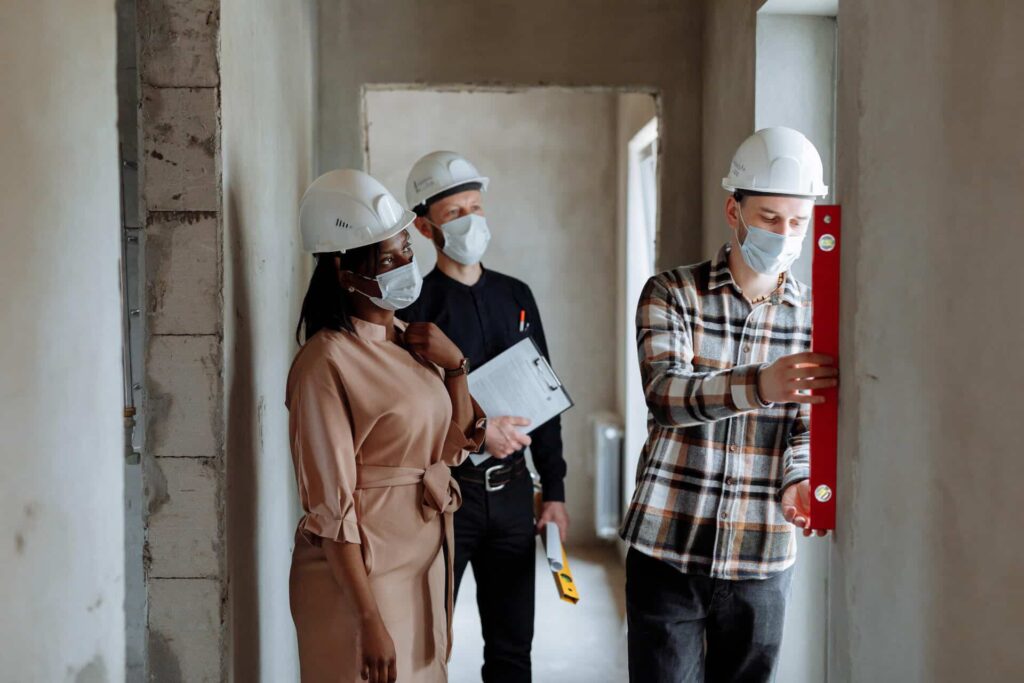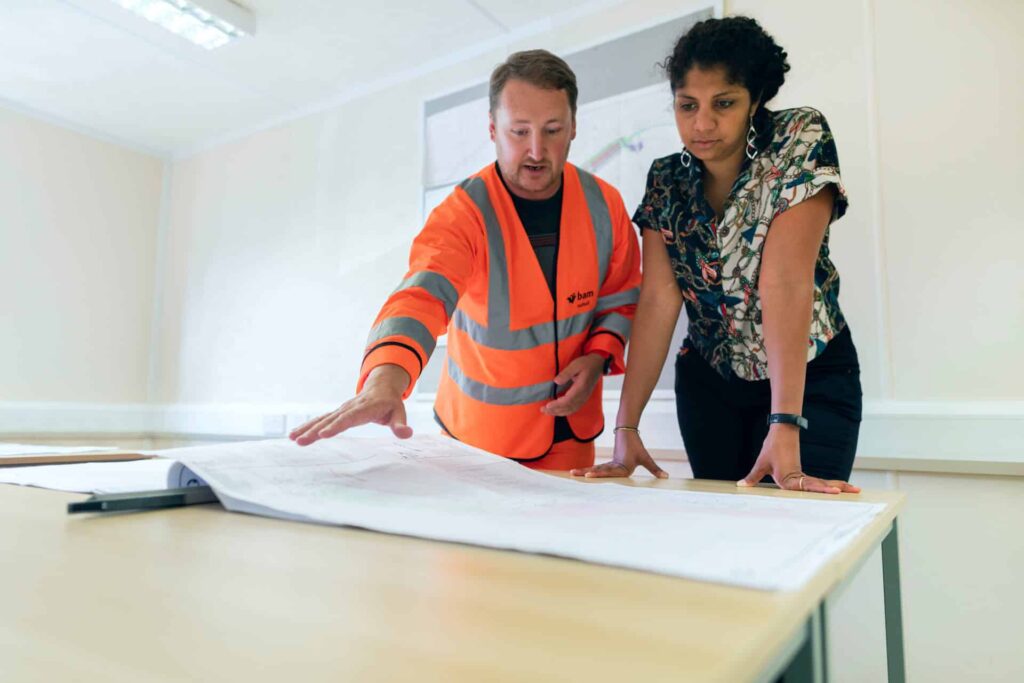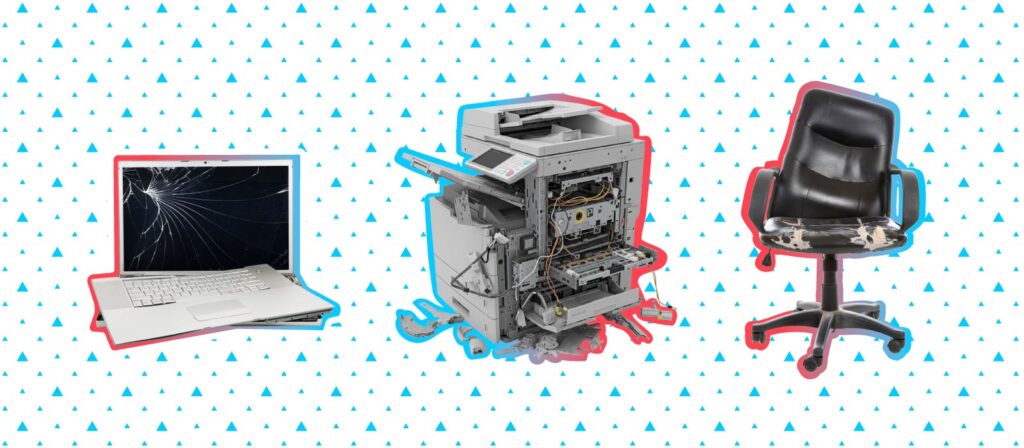Key takeaways
- Facility management (FM) maintenance is crucial for protecting capital assets and preventing costly emergency repairs, working closely with maintenance teams for smooth building operations.
- Predictive maintenance uses data and AI to proactively detect and address issues before they become problems, significantly reducing downtime and improving operational lifespans.
- Preventive maintenance involves routine, scheduled work to keep small problems from escalating, best supported by a comprehensive facility checklist and proper work order follow-through.
- The most effective FM strategy integrates both predictive and preventive approaches, enabled by robust workplace management software, to meet occupant needs and ensure a future-proof office.
Facility management maintenance is essential to the upkeep of any building.
Protecting capital assets and preventing the need for time-consuming and costly emergency repairs is ultimately one of the main roles and responsibilities of a facilities manager (FM).
That said, FMs usually aren’t the ones actually responsible for painting the foyer or installing a new lighting system. Instead, they work closely with facility maintenance teams to ensure there’s always someone doing the critical work to keep buildings running smoothly—both today, and well into the future.
In this article, we explore the importance of facility management maintenance. We also review why FMs need to optimize both predictive and preventive maintenance to keep their organizations running well.
What is the difference between facility management and facility maintenance?
Given their shared goals and duties, optimized facility management and facility maintenance are both necessary for a truly future-proof office space. And considering their shared work environments and overlapping responsibilities, it’s easy to confuse them.
Facilities management
First, facilities management is the lifeblood of any organization. That’s because facility management professionals are the ones responsible for creating and/or implementing workplace management solutions that help employees navigate both their physical and digital workspaces. They’re also often responsible for managing an organization’s real estate portfolio, hopefully with an eye towards improving space utilization.
Facility manager interview questions usually focus on organizational, people, and technology skills. Other necessary facility skills include effective communication, emergency preparedness, project management, request management, asset management, and increasingly as we return to the office, change management. FMs typically provide these services through the use of facility management software. This can be a CMMS, CAFM, or, ideally, a cloud-based Integrated Workplace Management System.
Finally, the FM is typically the one responsible for overseeing facility maintenance. Although they are not the ones who actually provide this service.
Facilities maintenance
Like the name suggests, facilities maintenance is about tending to the physical needs of commercial and corporate real estate buildings.
Essentially, facility maintenance workers are responsible for keeping a building functional, safe, and attractive, through performing regular, physical upkeep—both of building interiors and exteriors, including landscaping and sometimes parking lots.
Facility maintenance teams are responsible for routine maintenance on all major systems. This includes HVAC, maintaining office equipment, janitorial services and plumbing, infrastructure including roofing and windows, pest control, elevators, and electrical building systems.
Ultimately, organizations need both facility management and facility maintenance services if they want to keep their buildings functional and prevent unnecessary downtime.
For example, when it comes to fire safety, facilities management teams are responsible for working with facilities maintenance to create a safe plan, as well as to ensure that maintenance teams follow through on all tasks.
Or when shoring up security in building automation systems, it’s usually FMs who take the lead on bringing in the right people to create the right maintenance plan. Even though they likely understand little about the inner workings of these systems themselves.
While FMs don’t need to know how to provide maintenance services, they do need to know what is necessary for building maintenance. And they need to work with the right maintenance technicians to ensure these critical jobs get done.
Both teams come together to create a flexible work environment that is able to meet the needs of building occupants—now and in the future.
And this is done best when FMs work with facility maintenance teams. They can create a plan for both predictive and preventive maintenance. Ideally using a computerized maintenance management system.

Keeping facilities at the ready
It’s a mistake to defer any type of maintenance work in any type of facility.
Think about the children’s fable about the grasshopper and the ant. During the summer, the carefree grasshopper mocks the ants who are working hard to shore up their supplies for winter. Why bother preparing for the future, when things are great now?
Of course, come wintertime, the grasshopper comes begging for food. And it’s no different when it comes to facility management and maintenance.
Yes, it might be easier to defer maintenance tasks when you’ve got a new building that’s in tip-top shape.
But even new buildings in tip-top shape need regular maintenance. Deferring maintenance can damage a building’s integrity, and can lead to more expensive and disruptive repairs down the road. It can also impact resale value of the property.
And that’s not to mention staying in compliance with OSHA (the Occupational Safety and Health Act).
On the flip side, creating a maintenance program is how organizations can prevent the need for expensive and time-consuming repairs down the line. It’s doing the work now, so that, like those ants, you’re prepared for any problems that might arise in the future.
Plus, no one wants to work in a building where the windows are drafty, the network is spotty, and paint is peeling from the walls.
In this way, keeping buildings updated also contributes to workplace experience, so that it also dovetails with overall FM responsibilities.
And as we’ll explore, the best way to keep buildings updated is with predictive and preventive maintenance. This is best handled with the right workplace analytics.

What is predictive maintenance?
Predictive maintenance is about using technology to detect issues before they become problems, making it a key facility management service. At its core, It’s about using data in a smart way to be proactive, rather than corrective.
According to a recent study, building predictive maintenance can be a ‘hard and costly task,’ albeit a necessary one. This is due to how it can prevent failures, improve operational lifespans, and improve comfort for building occupants.
That’s why, in order to provide predictive maintenance, FMs will need a good working relationship with maintenance teams. They’ll also need incredibly robust and user-friendly reports and analytics from workplace management software and AI.
The importance of data
To ensure long-term sustainability, FMs need to be able to easily measure and monitor the life-cycle of all major systems in their buildings. It’s only when you arm themselves with data that you can actually read and understand that you can make predictive maintenance part of your routine operating procedures.
And of course, it’s best when this data is informed by smart buildings IoT with integrated AI technology.
For example, consider IoT sensors that show you how building occupants are actually using the building. You’ll get a much better picture of the actual wear-and-tear on your property. These sensors can be particularly useful in a hybrid or free address workplace. This is because occupancy rates can vary widely from day to day in these environments.
“Predictive maintenance can be used across industries, including in the oil and gas and manufacturing sectors, to identify faulty equipment and save lives, time and money down the line.”
Aparajeeta Das, Forbes Councils Member, How AI-Powered Preventive Maintenance Saves Lives, Time And Money For The Utility Sector
Or you can review BAS data about the HVAC system or energy measurements. This can help to glean insight that helps make more informed decisions for facility planning.
Both cases show that having a plan is one thing, but having a plan informed by data is something else entirely.

What is preventive maintenance?
Predictive maintenance feeds into preventive maintenance (also referred to as ‘preventative’ maintenance). This is all the work done to keep small problems from becoming big problems in a building.
Ideally, FMs will have AI data that can help them better predict where they should be focusing preventive efforts.
Regardless, with or without this data, FMs need to create a facility checklist. This should include all routine preventive maintenance that needs to be done on a regular basis.
Then they need to communicate what needs to be done with maintenance teams. And follow up on work orders to ensure everything is carried out properly and on time.

Looking for a way to overhaul your preventative maintenance methods? Be an early adopter of OfficeSpace’s Preventative Maintenance Software and keep assets running longer.
The outsourcing factor in FM
Of course, not every organization has the budget for full scale, in-house facility and property maintenance. When this is the case, they may turn to outsourcing their preventive and/or predictive maintenance.
In general, preventive maintenance lends itself better to outsourcing than predictive efforts. It’s easy to hire the right company to come in and perform specific work requests to keep everything in order. Why pay for a full-time AC technician, when you can find one with great credentials who will work as needed?
Meanwhile, predictive maintenance is much better kept in-house, as it relies on implementing and interpreting the right internal technology. Plus, owning the data you glean from AI can help in other areas of workplace management as well.
Thankfully, choosing the right IWMS can make it easy to both track any outsourced maintenance. In addition, it can more easily manage in-house predictive maintenance.
What is the most important factor to consider in facility management?
The most important factor to consider in facility management is always how well you’re meeting the current needs of building occupants, while also predicting and preparing for what they might need in the future. This in turn helps organizations make and save more money, since the most successful workplace teams are ultimately those with safe and efficient places to work.
And the only way to meet the needs of facility occupants is to ensure you’re collecting the right data and using it in the right way. That’s why facility management success comes from data-driven and people-led decisions.
OfficeSpace offers well-integrated tools that make facility management maintenance easy. Reach out for a free demo.
Photos: Goodboy Picture Company, sturti, Thirdman, Field Engineer, ThisIsEngineering




